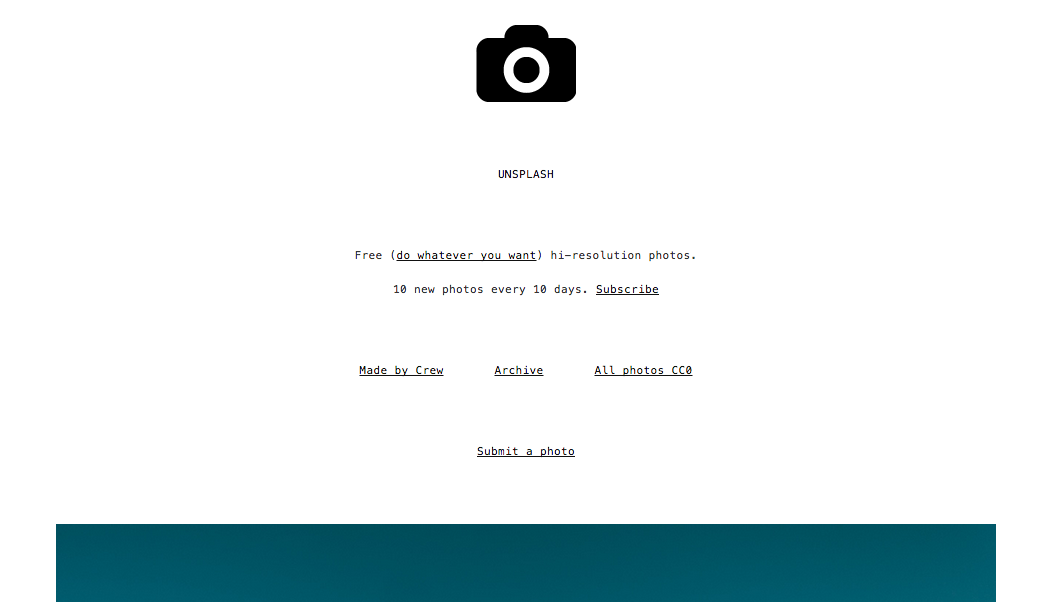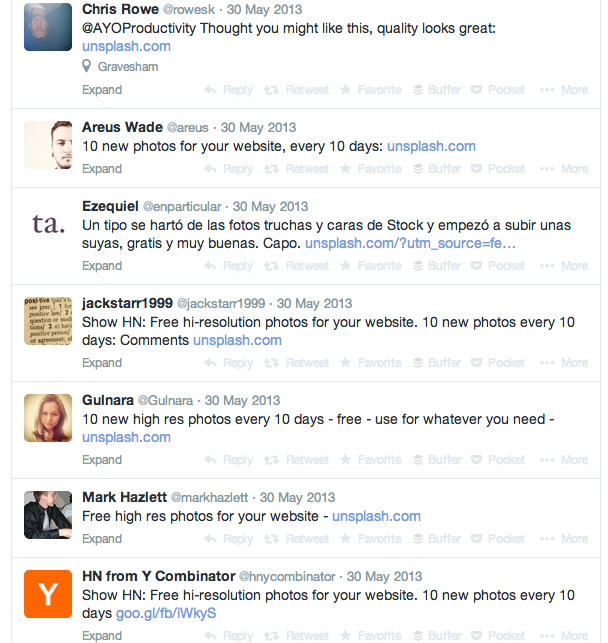How work on third-party projects saved our startup
- Transfer

The text “How side projects saved our startup” was written by Crew startup founder Michael Cho and published on the Crew blog. Its first part is devoted to a specific story related to the Unsplash project (on Habré it was recently mentioned in the popular record “300 awesome free services” ), and the second - to Cho’s general thoughts about the benefits of third-party projects. The first one is translated here. The illustration above, of course, is taken from Unsplash :)
We did not have money.
We changed the business model, and the remaining money was enough for three months, for which we needed to change the situation. If we could not, then our business would be over.
Budget for marketing? Do not tell my slippers. We barely had enough money to support the work.
That was the situation a year and a half ago at Crew . We knew that we had to grow, but did not know how to do this sufficiently.
Things like blogging work, but months pass before they make a big impact.
Making a great product that users will talk about to each other is a matter of course, but it also takes time.
Although we did all this, we needed to increase the “normal” growth rate if we wanted to survive.
At that time, we were engaged in the home page of our site. Looking for a suitable photo, we noticed that all the options were either bad or expensive, or both at once.
Instead of using them, we hired a photographer and took a set of pictures in a coffee shop. We used only one, so we still have extra. We thought: “probably many people have the same problem, so we’ll publish them for free for everyone.”
After spending $ 19 on a theme for Tumblr and an hour of time, we got an Unsplash site with the top 10 of our unused photos and a link to our main site.
Here is a screenshot of an earlier version of Unsplash:

We launched unsplash.com and posted a link to HackerNews, a site that provides links to the best resources found on the Internet and allows participants to vote for them. The HackerNews community is largely composed of designers, programmers, and entrepreneurs — an audience for which, as we thought, Unsplash might be useful.
From what happened then I went nuts.
I did not expect that the link will have a greater effect than several hundred visitors to the site. I went about my business until I received a letter from the photographer who took the pictures. He wrote:
“Dude, I'm glad you liked the pictures! "I don’t know what you did to them, but now on the site with my portfolio of a breakthrough to the people!”
I returned to HackerNews to see what was happening.
Unsplash was the number one site there.
Here is a screenshot of the original

post : People crowded on Unsplash.
20,000 visitors.
After 10 minutes, there were 50,000 visitors.
Then we saw a big peak in traffic from the main Crew site. We have got many customers. And a lot of love. Much more than we ever received from any ad campaign or blog post. Here is a screenshot of the first tweets after starting Unsplash.

All this was the result of what it took less than half a day to create.
It looked like magic. How could this happen? In a few hours, we got more people interested than in the whole previous year. We made Unsplash to provide people with something of value. We thought that if several hundred people found it useful, it would be a victory. But we did not expect such a level.
That day, we not only felt the benefits of creating value, but also realized a big change in how marketing should be today to be noticed: the best marketing is when you don't know what marketing is.
